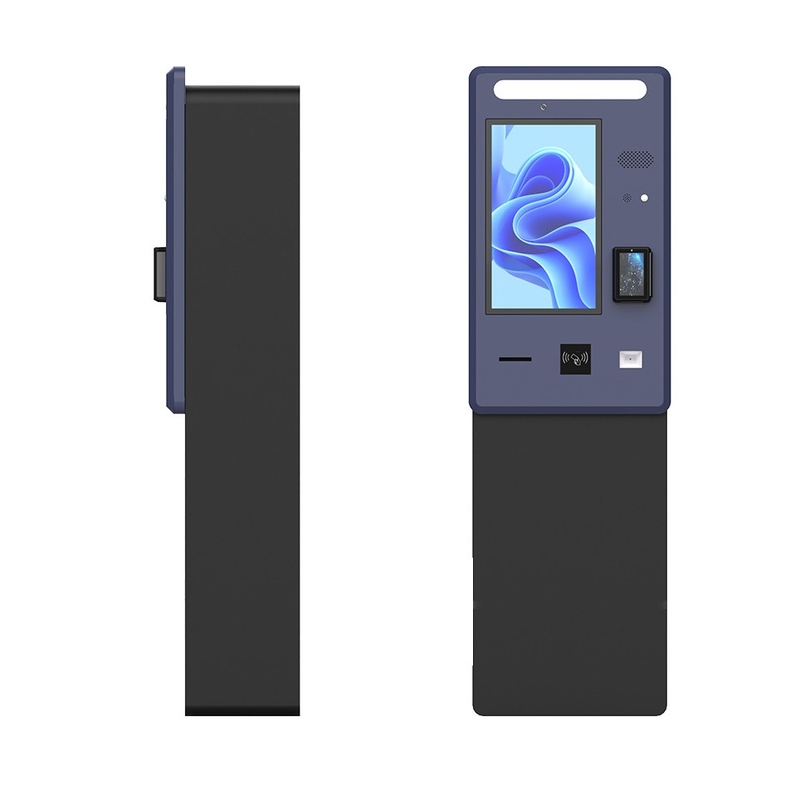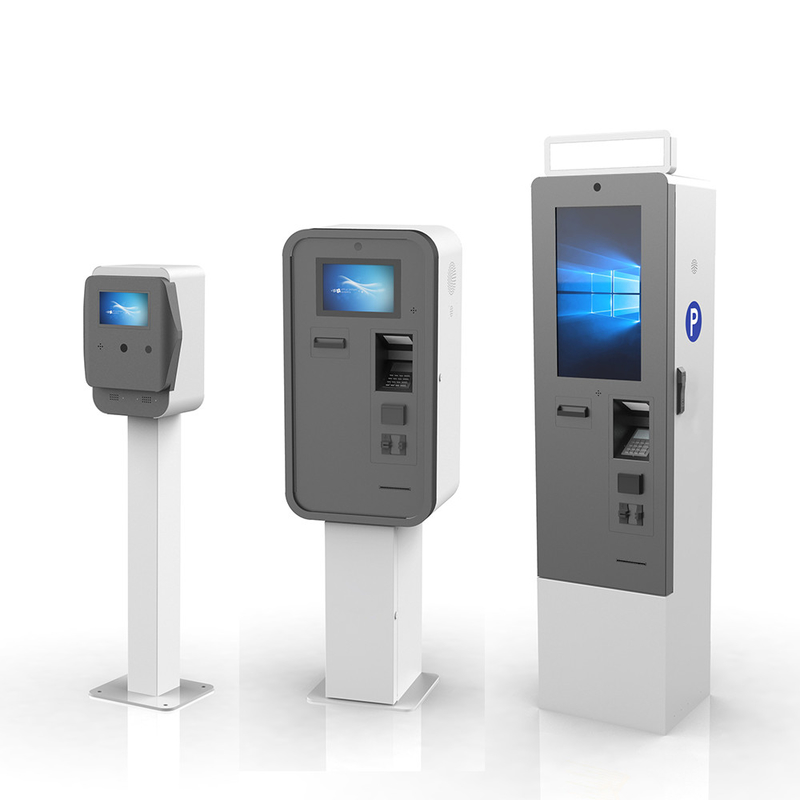Product Details
| Place of Origin: | kiosk manufacturer |
|---|---|
| Brand Name: | Lien |
| Certification: | FCC, CE, ROHS |
| Model Number: | LKS-8476 |
Payment & Shipping Terms
| Min Order: | 10 UNITS |
|---|---|
| Price: | $ |
| Packaging: | Strong Case |
| Delivery Time: | 5-6 weeks |
| Payment Terms: | TT |
| Supply Ability: | 5000 units per month |
Detailed Product Description
Outdoor kiosk, specifically designed for parks, is freestanding structures that provide essential information, services, and interactive experiences for visitors. These kiosks serve as digital wayfinding tools, allowing easy access to park maps, event schedules, and available amenities. Built to withstand various weather conditions, outdoor kiosks are crucial for enhancing visitor experiences in recreational spaces.
Outdoor kiosk is constructed from high-quality, weather-resistant materials like aluminum and tempered glass. This ensures they remain functional and visually appealing despite exposure to elements such as rain, sun, and wind. With features like UV protection and corrosion resistance, these kiosks are designed for long-term use in outdoor environments.
Equipped with advanced touchscreen displays, outdoor kiosks enable visitors to interact seamlessly with the information provided. Features such as QR code scanning and social media integration foster greater engagement, allowing users to connect and share their experiences effortlessly.

By offering real-time information and services, outdoor kiosks significantly enhance the visitor experience. Users can quickly find directions, learn about ongoing events, and discover park amenities, making their visits more enjoyable and efficient.
Outdoor kiosks automate information dissemination, reducing the need for on-site staff. This allows park management to allocate resources more effectively while collecting valuable data and feedback from visitors.
Outdoor kiosks serve as vital information hubs, providing maps and details about activities, trails, and park facilities. This feature assists visitors in navigating the park, enhancing their overall experience.
These kiosks facilitate ticket purchases for events or entry fees, offering a convenient payment solution for visitors. Integration with various payment methods ensures a smooth transaction process.
Outdoor kiosks promote community events, announcements, and surveys, fostering greater engagement between park management and visitors. This encourages feedback and participation in park activities.

Various types of outdoor kiosks can be utilized in parks, including informational kiosks, ticketing kiosks, and interactive kiosks. Each type caters to different visitor needs, enhancing the overall park experience.
| Kiosk Size | Dimensions (W x H x D) | Use Case | Description |
|---|---|---|---|
| Small | 32" x 48" x 24" | Information and wayfinding | Ideal for parks with limited space; provides maps, directories, and event info. |
| Medium | 42" x 60" x 30" | Ticketing and service | Suitable for ticket sales, park pass renewals, or rental services. |
| Large | 55" x 72" x 36" | Interactive exhibits | Designed for multimedia displays and interactive content, engaging visitors. |
| Freestanding | 48" x 84" x 36" | Visitor engagement | Tall kiosks that offer a variety of functions, including digital signage and interactive touchpoints. |
| Modular | Customizable (varies) | Flexible installation | Adaptable sizes based on specific park needs; can be combined with other units for larger installations. |
Outdoor kiosks come in various sizes, ranging from compact units suitable for small parks to larger installations for extensive recreational areas. This versatility ensures they fit seamlessly into any park environment.
The price of outdoor kiosks varies based on type, size, and features. Basic informational kiosks may start at a lower price point, while interactive kiosks with advanced capabilities can be more expensive. A detailed cost analysis helps parks budget effectively.
While the initial purchase cost is important, considering long-term operational and maintenance costs is crucial. Investing in durable outdoor kiosks can lead to significant savings over time by minimizing repair needs and enhancing visitor satisfaction.

Identify Needs: Determine the specific requirements based on the park's size and visitor demographics.
Research Models: Explore various outdoor kiosk types and features that align with your needs.
Contact Suppliers: Reach out to manufacturers to discuss specifications, pricing, and warranties.
Compare Options: Evaluate different suppliers based on quality, price, and service.
Finalize Purchase: Make an informed decision and proceed with the order.
Several reputable suppliers specialize in outdoor kiosks for parks. Researching these suppliers will help ensure you find a trusted partner for your park's needs.
Many parks have successfully integrated outdoor kiosks, showcasing their ability to enhance visitor engagement and operational efficiency. Case studies highlight specific parks that have implemented kiosks, detailing the positive impacts on visitor experiences.
Surveys and feedback collected from park visitors reveal high satisfaction rates regarding the availability of information and ease of use of outdoor kiosks. This data underscores the importance of these installations in modern park management.

To ensure longevity, regular maintenance is essential. Cleaning the screens, checking hardware functionality, and updating software are critical tasks to keep outdoor kiosks running smoothly.
Most reputable kiosk manufacturers offer comprehensive support services, including troubleshooting, software updates, and technical assistance. Choosing a supplier with robust support ensures you have help when needed.
Look for features such as weather-resistant materials, touchscreens that are visible in sunlight, interactive software for information and ticketing, and the ability to integrate with existing park systems.
Outdoor kiosk can enhance visitor engagement by providing real-time information, maps, and event schedules. They can also streamline ticketing and payments, improving overall visitor experience and satisfaction.
The cost varies based on features and customization options, typically ranging from $5,000 to $15,000. Additional expenses may include installation, maintenance, and software licensing.
Choose a kiosk with a touchscreen interface that supports multiple languages, includes clear instructions, and has accessibility features such as audio guidance and height-adjustable screens for users with disabilities.
Look for durability, weather resistance, interactive capabilities, and ease of use.
Regular cleaning, software updates, and routine checks of hardware components are recommended.
As technology evolves, outdoor kiosks will become increasingly integral to enhancing visitor experiences in parks. Their ability to provide information, facilitate payments, and engage the community positions them as valuable assets for park management. Investing in outdoor kiosks today ensures your park stays relevant and visitor-friendly in the future.